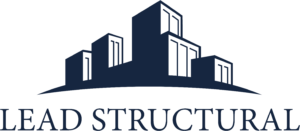Structural Analysis Software: Tools and Techniques for Engineers
Introduction:
In the field of structural engineering, the use of advanced software has revolutionized the way engineers analyze and design complex structures. Structural analysis software has become an indispensable tool for professionals, enabling them to accurately model, simulate, and evaluate the behavior of various building systems. In this blog post, we will delve into the world of structural analysis software, exploring the essential tools and techniques that engineers rely on to ensure the safety and efficiency of their designs.
- Understanding the Importance of Structural Analysis Software:
Structural analysis software plays a crucial role in the design process, allowing engineers to simulate and predict how a structure will behave under different loading conditions. By utilizing these powerful tools, engineers can identify potential structural weaknesses, optimize designs, and ensure compliance with safety standards. This section highlights the significance of structural analysis software in modern engineering practices.
- Key Features and Functionality of Structural Analysis Software:
This section provides an overview of the essential features and functionalities offered by structural analysis software. It discusses the capabilities of these tools, such as 3D modeling, finite element analysis (FEA), dynamic analysis, and material property libraries. It also explains how engineers can leverage these features to gain insights into structural behavior and make informed design decisions.
- Popular Structural Analysis Software Tools:
Here, we showcase some of the most popular and widely used structural analysis software tools available in the market. We explore their unique features, strengths, and applications. Mentioning specific software tools such as SAP2000, ETABS, ANSYS, or STAAD.Pro can help in optimizing search engine visibility.
- Techniques for Efficient Structural Analysis:
This section focuses on various techniques and methodologies that engineers employ while using structural analysis software. It covers topics such as load modeling, boundary conditions, meshing, and result interpretation. By discussing these techniques, the blog post provides practical insights for engineers to enhance their analysis processes and achieve accurate results.
- Advancements and Emerging Trends in Structural Analysis Software:
The world of structural analysis software is constantly evolving. In this section, we explore the latest advancements and emerging trends in the field. Topics may include cloud-based computing, integration with Building Information Modeling (BIM), artificial intelligence (AI)-driven analysis, and parametric design optimization. Highlighting these trends showcases the future potential of structural analysis software.
- Challenges and Considerations in Structural Analysis Software:
While powerful and versatile, structural analysis software does come with its own set of challenges and considerations. This section discusses factors like model accuracy, computational limitations, software interoperability, and user proficiency. By addressing these challenges, engineers can make more informed decisions when selecting and utilizing structural analysis software.
Conclusion:
Structural analysis software has transformed the way engineers approach structural design and analysis. From enabling complex simulations to optimizing structural performance, these tools have become invaluable in the industry. By understanding the key tools and techniques available, engineers can leverage the power of structural analysis software to create safer, more efficient structures. Embracing advancements and keeping up with emerging trends will be essential for professionals in this rapidly evolving field.
Remember to conduct keyword research and incorporate relevant keywords throughout the blog post to enhance its SEO performance. Additionally, using headings, subheadings, and bullet points will help make the content scannable and easily readable for both search engines and human readers.
